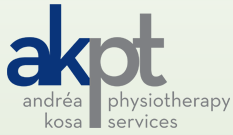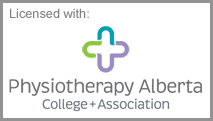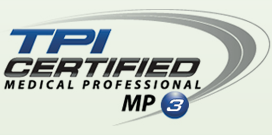Team Approach to Improving your Golf Game
By Andrea Kosa, Physiotherapist
Golf is a great game, but it can be a complex and challenging game! There are multiple factors involved in performing an efficient and effective golf swing; however these factors can be categorized into two main groups. One group would be described as external factors, which means, outside of the body. Examples of external factors can include: golf clubs, clothing, weather, and type of turf you hit from. Internal factors include areas within the body itself and can be described as, but not limited to: limited mobility, decrease stability, muscle imbalance, and pain. The great thing is both the external and internal factors can be identified and with some work – change towards the goal of improving your game.
Some external factors we cannot change, such as the weather! With this, you need to practice in adverse weather and try to adapt as best you can the current conditions. But things such as getting fit for the correct club length, weight, shaft flexibility, and lie can all be modified to fit you specifically. Making sure your grips are the correct size for your hand and are not worn out and slippery is an easy external factor to manage by visiting your club pro or club repair department in the area.
The internal factors can be more work to make lasting changes! Knowing how your body moves and any limitations or deficiencies you may have can be the first big step to improving your golf game, preventing injuries, or returning to golf after an injury. Pain is a red flag that signifies something in the body system is not functioning as well as it should. One consequence of pain is muscle inhibition, the turning off of muscles which will in turn change how the sequence of muscle firing and change proper movement patterns. Those golfers that have no pain can have movement limitations due to poor posture or a chronic condition. Repeating a poor movement pattern can stress healthy tissue and wear and tear it down, that can lead to pain and poor performance eventually. Our bodies are smart! The body will get the job done even though it may be not the most efficient. As a result, the risk of injury can be higher and golf performance can be decreased. Our golf season is short enough – no need to waste time trying to heal an injury.
Medical professionals who have training in golf performance are able to assess your golf body to identify areas that can be at risk for injury or limiting your performance. By knowing areas of limitations, you, your golf pro, and/or fitness trainer, will be able to provide a successful plan to correct the limitation for you to reach your goals of a better golf game. Medical professionals are able to direct your treatment of pain and inflammation, while recommending specific exercises that can help you get your body moving more efficiently. Once you are ready for a specific golf fitness program or golf lesson, a trainer or golf teaching professional can be recommended to you so that you can work on your golf body in preparation for the golf season or year round.
As the season progresses and your game and physical abilities change – you may need to have your technique, your internal (physical) factors, or external factors, like clubs, re-assessed and adjusted so that you can push forward in improving your golf game and enjoyment of this great sport!
REFERENCE:
Rose, Dr. Greg, Phillips, Dave and Titleist Performance Institute. “Today’s Hexagon of Player Development”, Level One 2010 TPI Certified Seminar Manual, page 9-11. Acushnet Company 2006.






